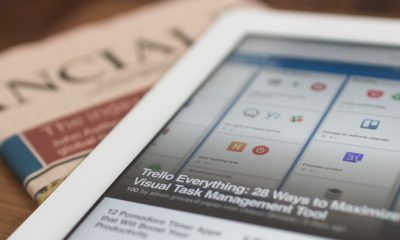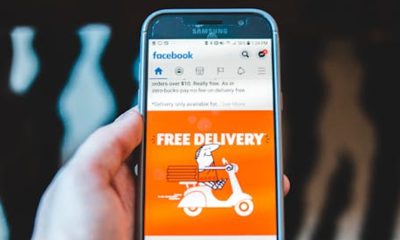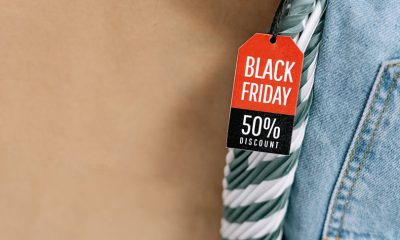The pandemic has caused a noticeable change in consumer behavior, which in turn necessitates a corresponding change in every retailer’s business processes. As the Philippines reopens its economy, businesses are reassessing their strategies and recovery plans differently. In fact, about 45% of business owners are hesitant to resume their operations, according to a survey by the World Bank, National Economic and Development Authority and Department of Finance.
Retailers are used to reacting to evolving market demands, and they understand that the pandemic’s impact on the industry is likely to be long-lasting, even after a vaccine is found. To help retailers understand the new normal, Zebra Technologies has identified the pandemic-related industry changes as the 3 Waves. This outlines the recovery process of most retailers, spanning the immediate changes that ensured stability in the early days and the longer-term, strategic changes that will become institutionalized.
WAVE 1: MAINTAINING BUSINESS STABILITY
Wave 1 started when global economies began to shut down in early March 2020, and many retailers were forced to stop operations in response to quarantine protocols. Many had to cut back on costs to stay afloat. Those that kept their operations had to optimize resources and labor hours while ensuring employee health and safety.
When panic buying started to strain supply chains in the early months of the lockdown, retailers realized that conventional demand planning models no longer worked. They had to find new ways to meet consumer needs without compromising their employees’ safety or incurring greater costs.
Retailers immediately started investing in technologies that could give them a crystal-clear picture of what was happening within their four walls and their supply chains. Many retailers increased their use of mobile computing and scanning solutions, helping boost their capacity to replenish orders, speed up end-to-end fulfillment and accommodate customers’ basic needs and wants both in-store and online.
Based on the collective feedback from retail leaders and store associates, the biggest lessons during Wave 1 were the importance of:
1. Real-time operational visibility
Retailers should invest in technologies that improve their capacity and speed in managing their inventory to cope with the demand, while providing them with real-time visibility across the supply chain at the same time.
According to Zebra’s APAC Shopper Study, 88% of retailers agree that maintaining real-time inventory visibility is a significant challenge. And up to 85% say their companies need better inventory management tools to ensure accuracy.
Having access to data on operations in real time will help retailers to address consumer needs immediately and avoid either under- or over-inventory situations. This enables retailers to ensure operational efficiency and business resilience even amid pandemic constraints.
2. Distributing actionable intelligence to store associates and supply chain partners
In any given day, especially during the pandemic, store employees and supply chain partners face challenges in assisting customers. Retailers must provide them with the right tools to attend to customers’ needs by swiftly locating inventory within their stores and knowing how much inventory is left so they can get it replenished. This prevents loss of sales and translates to greater customer satisfaction thereby improving business outcomes.
This is where prescriptive analytics, intelligent automation, wearables and handheld mobile computers become exceptionally handy.
3. Overcommunicating with customers, especially when you aren’t going to be able to deliver what they want on time or at all
When stay-at-home orders were issued, many consumers had to stop going to physical stores and relied solely on online shopping for their groceries and other essentials. Being unable to see store shelves, consumers had to rely on real-time stock inventory information presented on the website or mobile app to know whether an item was available.
According to a study conducted by Nielsen during the Enhanced Community Quarantine, 27% of Filipino consumers switched brands in certain categories because the products from their preferred brands were out of stock. In such cases, the lack of communication about what is available and the inability to provide alternatives to consumers created frustration among consumers. This compromised their trust in the retailers’ capability to meet their demands and needs.
4. Prioritizing worker and customer safety above all else and compensating associates for the risks they’re taking on the front lines
Some retailers provided financial aid to their employees to help them during the pandemic. But beyond the monetary assistance, store associates are more inclined to come to work and give their 100% when they feel they are being taken care of and are physically protected. Employees expected and appreciated efforts by retailers to maintain strict social distancing and sanitization measures, especially during the early months of the quarantine when paranoia about the virus was so high. These measures included frequent disinfection of shared scanning and mobile devices and the investment in “personal” protective wearables.
WAVE 2: A NEW RETAIL NORMAL
As operations started to stabilize, essential retailers were able to focus on institutionalizing new ways to engage customers with online and in-store experiences. Retail leaders made efforts to get people in and out of stores as quickly as possible. They ensured physical distancing through several measures, such as limiting the number of people allowed in the store at any given time, setting up directional flow lines and installing dividers to prevent contact. Temperature checks, regular disinfection and other cleaning regiments helped provide a safe environment for both shoppers and store associates.
Even when the pandemic quiets down, retailers will still take precautions to maximize the health and safety of both customers and employees in stores, corporate offices and warehouses. Services such as “buy online, pick up in store” (BOPIS) with curbside pickup options, contactless purchases and increased integration between digital and physical experiences will become the standard means of engaging with customers.
WAVE 3: LONG-TERM TRANSFORMATION
At some level, the long-term transformation in Wave 3 should occur simultaneously with Wave 2. The pandemic is accelerating retail digitization by several years. As retailers prioritize new technologies and solutions to ride the tide of increased online shopping, such new approaches will be part of efforts to ensure retail business viability moving forward.
Retailers have no choice but to accelerate planned efforts to increase product sourcing diversity, leverage intelligent automation and scale e-commerce fulfillment capabilities. As such, businesses should consider prioritizing increased product sourcing diversity, intelligent automation and optimizing last-mile delivery to achieve greater resiliency and backend efficiency.
When demand for certain non-discretionary products spiked as news around COVID-19 broke, Philippines’ Department of Trade and Industry imposed limitations on the purchase of basic commodities to prevent supply shortage. Many retailers, however, have not yet diversified their product sources to a point where backend shortages remain “invisible.” This reinforces the need for product sourcing diversification to ensure enough supply.
The combination of artificial intelligence (AI) and robotics can bring data-driven approaches to supplier quality, merchandising, distribution, and logistics and fulfillment, giving retail leaders the insights necessary to maximize value capture. Instead of reacting to external forces and rapid changes in consumer behavior, intelligent automation creates opportunities to operate more proactively.
As the pandemic emphasizes the need to improve e-commerce and logistics capabilities, retailers are realizing the need to enable and optimize last-mile delivery to satisfy customer expectations, reduce marginal costs and improve overall efficiencies. To optimize last-mile delivery, retailers can provide flexible delivery options based on delivery method and location, create a collaborative network with suppliers to maximize visibility on the backend, leverage brick-and-mortar stores as fulfillment centers and use technology to maximize the value of delivery routes. All these will help ensure a safer and more efficient business flow that minimizes the impact of the pandemic while positioning the business for future success.
The pandemic has stressed the need for retailers to reassess their business processes and study the importance of innovation. Understanding the industry and choosing the right combination of solutions will assure business continuity for retailers, and service reliability for their customers. Retailers that can strengthen their digital capabilities and ensure a better online shopping experience will gain end-user trust and encourage more online transactions. This translates to greater business success not just during the pandemic-recovery phase but also in the future.


 BizNews4 weeks ago
BizNews4 weeks ago
 BizNews4 weeks ago
BizNews4 weeks ago
 BizNews4 weeks ago
BizNews4 weeks ago
 BizNews4 weeks ago
BizNews4 weeks ago
 BizListing4 weeks ago
BizListing4 weeks ago
 BizNews4 weeks ago
BizNews4 weeks ago
 BizNews4 weeks ago
BizNews4 weeks ago
 BizListing2 weeks ago
BizListing2 weeks ago














